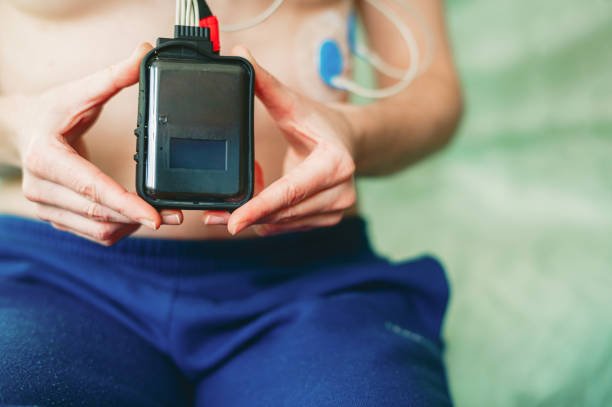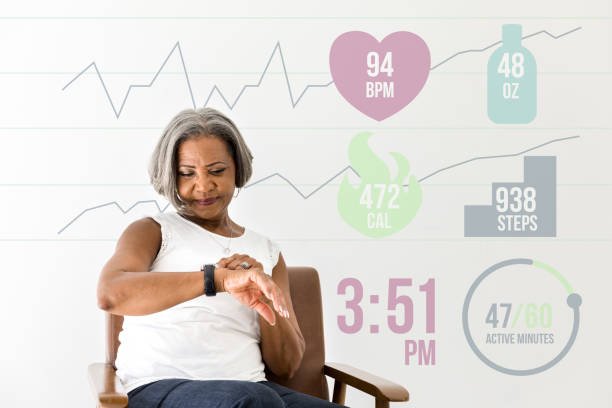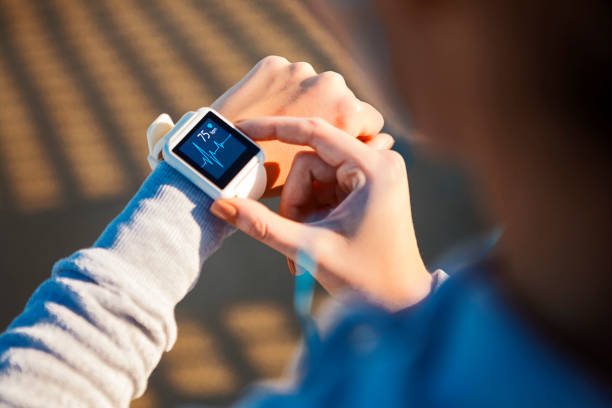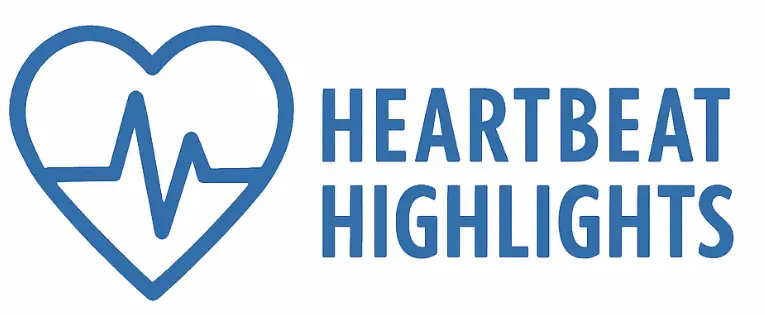Portable ECG devices are making it easier than ever to check your heart rhythm at home, detect problems earlier, and share results with your doctor without stepping into a clinic.

The Heart Monitor That Fits in Your Pocket
Picture this: you’re sitting at your kitchen table, sipping your morning coffee, when you feel an unusual flutter in your chest. Ten years ago, you’d have had two choices — ignore it or schedule a doctor’s appointment and hope the episode happens again while you’re in the clinic.
Today? You can pull out a small device from your drawer or tap your smartwatch, take an ECG (electrocardiogram) in 30 seconds, and send it straight to your doctor for review.
This isn’t science fiction anymore — it’s the new reality of at-home ECG technology. And it’s changing how we detect, monitor, and manage heart rhythm problems.
Understanding the ECG: Your Heart’s Electrical Story

An ECG is a simple but powerful test that records your heart’s electrical activity. Every time your heart beats, electrical signals spread through its chambers, telling them when to squeeze and pump blood. An ECG captures these signals as a series of waves and lines.
Doctors can look at that pattern to see:
- If your heart rhythm is regular or irregular
- If you might have atrial fibrillation (AFib) or other arrhythmias
- Signs of past heart attacks or areas of strain
- Clues about heart enlargement or other structural issues
Traditionally, ECGs have been done in clinics or hospitals with a machine the size of a small suitcase, connected to your chest, arms, and legs with sticky electrodes. But in the last decade, technology has miniaturized this into wearable patches, handheld devices, and even smartwatches.
From the Hospital to Your Home: How At-Home ECG Works

At-home ECG devices come in a few different forms, each with their own advantages.
1. Smartwatches with ECG
Devices like the Apple Watch and Samsung Galaxy Watch have built-in sensors that let you take a single-lead ECG by touching the watch with your other hand. While it’s not as comprehensive as a hospital 12-lead ECG, it can spot many irregular rhythms and save the results for your doctor.
2. Handheld ECG Recorders
Gadgets such as KardiaMobile by AliveCor are small, credit-card-sized devices you press your fingers against. They connect to your smartphone and give an instant reading, often with rhythm analysis built in.
3. Wearable ECG Patches
For people who need continuous monitoring, wearable patches like the Zio Patch can record your heart rhythm for up to two weeks or longer. These are prescribed by a doctor but can be worn at home, while you go about daily life.
Why At-Home ECG Matters
Heart rhythm problems often come and go. They might last a few minutes, hours, or days — and disappear before you get to the clinic. This is especially true for conditions like AFib, supraventricular tachycardia (SVT), or extra heartbeats.
At-home ECG changes the game because you can:
- Capture the episode as it happens
- Avoid the “false normal” problem of a clinic ECG taken when symptoms aren’t present
- Track patterns over time, which can help guide treatment decisions
Think of it like catching a photo of lightning during a storm — you might miss it if you’re not ready, but with the right tool always on hand, you have a much better chance.
The Health Impact: More Than Just Data
Having access to at-home ECG isn’t just about convenience; it’s about potentially life-saving early detection.
Spotting Silent AFib
Atrial fibrillation is a major cause of stroke, but many people have no symptoms. A quick ECG at home could be the first sign something’s wrong, leading to early treatment that can dramatically cut stroke risk.
Monitoring After a Procedure
If you’ve had a pacemaker implanted, a heart ablation, or other cardiac procedure, at-home ECG can help you and your doctor ensure your rhythm stays steady during recovery.
Managing Ongoing Conditions
People with known arrhythmias can use at-home ECG to check if medications are working or if rhythms are becoming more frequent.
Real-Life Scenario: Why Timing Is Everything
Meet David, 58, who sometimes felt his heart “skip” when he was watching TV. His clinic ECG came back normal, but the episodes continued.
One night, he used a handheld ECG at home during an episode — it showed AFib. He sent the tracing to his cardiologist the next morning, who confirmed the diagnosis and started treatment. That early action likely prevented a much more serious complication.
How Accurate Are At-Home ECGs?
Studies have shown that high-quality consumer ECG devices can be very accurate for detecting certain arrhythmias, especially AFib. Smartwatches and FDA-cleared handheld devices have specificities over 90% for common rhythm issues.
That said, there are limitations:
- They may miss very brief episodes or rhythms that don’t occur during a recording
- Some devices can give false positives, leading to unnecessary worry or testing
- They don’t replace a full 12-lead ECG for diagnosing all heart conditions
This is why at-home ECG should be seen as a screening or monitoring tool, not a final diagnosis.
Getting the Best Results: Tips for Accurate Readings
If you’re using an at-home ECG, a few simple habits can make your readings more reliable:
- Stay Still: Movement can cause “noise” in the recording. Sit comfortably, with your arms relaxed.
- Make Good Contact: Ensure your fingers or skin have full contact with the device’s electrodes. Slightly moistening your skin can sometimes help.
- Record During Symptoms: If you feel palpitations, dizziness, or chest discomfort, take a reading immediately.
- Keep a Log: Note the time, what you were doing, and any symptoms you felt. This helps your doctor interpret the results.
When to Share Results with a Doctor
While it’s tempting to interpret your ECG at home, remember that a specialist’s review is essential. Share your results if:
- You see messages about possible AFib or other arrhythmias
- You notice sudden changes in your heart rate pattern
- Your symptoms are becoming more frequent or severe
If you experience chest pain, fainting, or severe shortness of breath, don’t wait for a device reading — call emergency services immediately.
The Future of At-Home ECG Technology
The next wave of at-home heart monitoring is already on the horizon:
- Continuous ECG in Smartwatches: Some companies are working on all-day rhythm tracking, not just on-demand.
- Multi-Lead Wearables: Devices that give more detailed views, approaching the quality of hospital ECGs.
AI Interpretation: Algorithms that can spot subtle changes even before symptoms appear, helping predict risk.
Bringing It All Together: Your Role in Heart Health
At-home ECG devices put part of your heart health in your hands — literally. They work best when used as part of a bigger plan:
- Healthy lifestyle
- Regular check-ups
- Open communication with your healthcare team
Think of it as a partnership: the device helps you capture the story, but your doctor is still the storyteller who interprets it and guides what happens next.
The Takeaway
At-home ECG technology has taken heart monitoring out of the hospital and put it into daily life. For millions, it means fewer missed diagnoses, earlier treatment, and greater peace of mind.
If you ever wondered whether those odd heart flutters are worth checking, the answer is simple: with today’s tools, it’s easier than ever to find out.
Your heart has a story to tell — and now, you have the means to listen anytime, anywhere.
References
- Bumgarner JM, Lambert CT, Hussein AA, et al. Smartwatch Algorithm for Automated Detection of Atrial Fibrillation. J Am Coll Cardiol. 2018;71(21):2381–2388.
- Perez MV, Mahaffey KW, Hedlin H, et al. Large-Scale Assessment of a Smartwatch to Identify Atrial Fibrillation. N Engl J Med. 2019;381:1909–1917.
- Tison GH, Sanchez JM, Ballinger B, et al. Passive Detection of Atrial Fibrillation Using a Commercially Available Smartwatch. JAMA Cardiol. 2018;3(5):409–416.
Haberman ZC, Jahn RT, Bose R, et al. Wireless Smartphone ECG Enables Large-Scale Screening for Atrial Fibrillation. Heart Rhythm. 2015;12(5):872–878.
Disclaimer
This article is for educational purposes only and is not a substitute for professional medical advice, diagnosis, or treatment. Always seek the guidance of a qualified healthcare provider with any questions about your heart health or symptoms.









